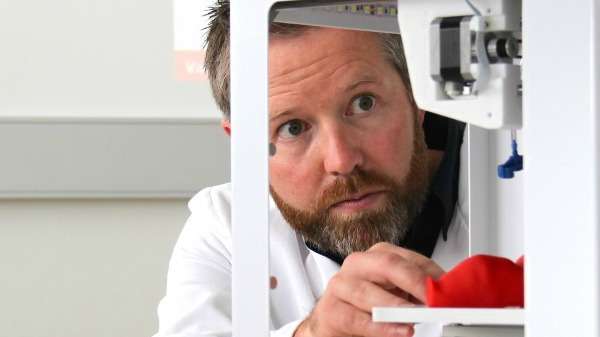Integrated program to deliver improved health outcomes

An integrated approach to tackling cancer and heart disease may fast-track medical breakthroughs according to Western Australian researchers.
A ground breaking vision to integrate bioengineering, medicine and science has led to the creation of a biomedical engineering program aimed at delivering revolutionary medical breakthroughs.
The Biomedical Engineering@Perkins programs will place scientists, mathematicians and engineers under one roof to do cutting edge research and design work that could in the near future lead to devices like cancer screening devices and transportable 3-D bio-printed hearts, which could help combat the costly burden of repeat breast cancer surgery and reduce the numbers of people impacted by Australia's number one killer heart disease.
The program has brought together biomedical engineers, clinicians and scientists in the Harry Perkins Institute of Medical Research's state-of-the-art facility in Nedlands and consists of two laboratories, a Vascular Engineering Laboratory headed by Dr Barry Doyle and a Bioimaging Laboratory headed by Dr Brendan Kennedy.
Thousands of Western Australians are struck down by these potentially devastating illnesses each year and through the "cross-pollination" of the state's best minds, a biomedical powerhouse could emerge in the future.
"In WA approximately 20 to 30 per cent of all people having breast-conserving surgery will have to go back for a second surgery," Dr Kennedy says.
"This is hugely traumatising for the patient and can cost the health system about $50,000 to $100,000 extra," he says.
Dr Kennedy and his team are working on techniques to measure the mechanical properties of tissue, novel handheld imaging probes to translate bench-top imaging solutions to surgical scenarios and the development of optical coherence tomography system technology.
"At the moment surgeons use a finger to detect tumours on the gross scale. We're aiming to translate that sense of touch to the microscopic scale using a probe," Dr Kennedy says.
"Instead of pushing on the tissue with the finger we press the tissue with an actuator and then image the deformation of the tissue," he says.
"It is on the microscopic scale that breast cancer advances, so it is on this scale that you need to focus if you want to accurately detect the disease."
When ScienceNetwork WA last spoke to Dr Doyle he was guiding his inter-disciplinary team to develop heart and blood vessel modelling technology that could help predict disease before it occurs.
"The common language between different disciplines is so critical and that is something that you develop by working in the type of environment the research centre provides," Dr Doyle says.
"With engineers, clinicians, and life scientists all having their own lingo that they talk to their own people with," he says.
This article first appeared on ScienceNetwork Western Australia a science news website based at Scitech.





















